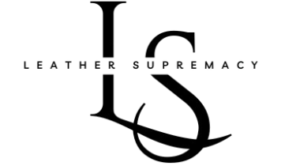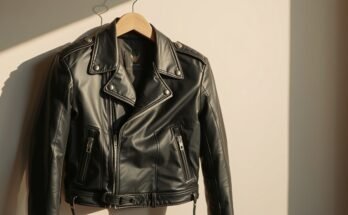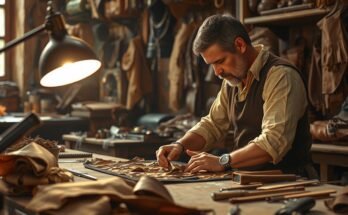Suppose you have ever desired to own a material with the look of natural leather while offering all the benefits of today’s innovation. In that case, microfiber leather is what you need. This material has found its way into the fashion industry, automotive, and countless others because it is long-lasting, cheap, and environmentally friendly. If you are looking for a fashionable jacket, a cozy sofa, or even the interior of a car, microfiber leather is now a popular option.
But what exactly is it? What is the difference between this and real leather? Why are people discussing it? In this guide, we will help you understand what microfiber leather is, how it is made, its advantages, and why it is set to become one of the most popular sustainable materials in the future. I assure you that by the end of this article, you will get to see why it is not just a trend.
What is Microfiber Leather?
Let’s start with the basics. Microfiber leather is a material that is made artificially to give the real leather look and feel. It’s made from microfiber – a type of strong, slender fabric made from polyester or nylon – and polyurethane coating. The result? A material that is smooth, bendable and strong at the same time.
Microfiber leather is cruelty-free and more environmentally friendly than genuine leather. Although it is a man-made material, the manufacturer has created it in such a way that it can easily be compared to leather which is real, expensive and has some moral issues associated with its use.
How is Microfiber Leather Made?
The secret of microfiber leather is in its manufacturing process. Here’s how it’s made:
The Microfiber Base: The basic structure of high-quality fabric is made of ultra-fine polyester or nylon yarns that are woven closely together to provide a light yet very durable fabric.
PU Coating: Then the fabric is laminated with polyurethane to make it have the shiny or nonshiny look that you may find in leather clothing.
Texture and Finishing: Sophisticated procedures are used to give the look and feel of real leather with its grain and other markings.
This process not only gives microfiber leather a very high durability but also allows color, texture, and finished options. It can be glossy or matte, new or worn out, whatever finish you desire, it is achievable.
Key Features and Benefits of Microfiber Leather

What makes microfiber leather so popular now? Let’s break it down:
Durability:
It is hard, does not get scratched easily and is more durable than most natural products. It is therefore suitable for use in products that are frequently used such as furniture and car seats. It doesn’t develop that classic leather look of being cracked or peeled out which means it will always give a professional finish.
Lightweight:
Despite this, it is much lighter than real leather and this makes it suitable for use in making shoes, bags and car interiors. This reduced weight offers comfort to products such as shoes and jackets and also reduces the shipping costs for manufacturers. This makes it very convenient for travelers who are in search of fashionable but convenient to carry items.
Water-Resistance:
Microfiber doesn’t absorb water which makes it very easy to clean and for that reason maintain. It is also stain-proof; this means that if you spill something on it, the stains will not stick for long. This property makes the material remain safe for use, particularly in such areas as car seats or sofas.
Customizable:
Since it comes in countless colors and finishes, it is perfect for arts and crafts and designs. From high-gloss to low-gloss, from clean to worn, microfiber leather gives you what you want. Also, the texture and the gloss level can be adjusted to meet the required design by the manufacturers.
Eco-Friendly:
Since it is not made from animal skins it is considered to be a more ethical material to use. The production uses less water and fewer chemicals than the conventional leather tanning process hence is less hazardous to the environment. Because modern consumers prefer goods that do not harm the environment, microfiber leather meets this trend.
Microfiber Leather vs. Genuine Leather
The age-old debate: real vs. synthetic. Here’s how microfiber leather stacks up against the real deal:
Appearance
You may not even be able to tell that there was a difference just by looking at it. Today’s microfiber leather is designed to mimic the grain and texture of genuine leather and it is nearly impossible to differentiate it from real leather unless one is told.
Durability
Although real leather develops a unique patina with the passage of time, microfiber leather hardly changes its texture for years. It is also less likely to crack or fade away.
Breathability
This is one area that remains a domain of genuine leather to a certain extent. Microfiber leather is not as breathable as real leather, which makes it a bit warmer in use.
Price
If you are looking at the cost, then microfiber leather is the best option for you. It’s a luxury at a fraction of the cost of other high-end products.
Ethical Considerations
Animal lovers, rejoice! This is where the microfiber leather comes in and it’s a plus point since it is not sourced from animals.
Where is Microfiber Leather Used?

Microfiber leather has to be one of the most versatile materials that are currently being used in the market. Here are some of its most popular applications:
Fashion: Consider jackets, handbags, wallets, even shoes. This is because it is lightweight and has a stylish finish that is so much loved in the fashion industry.
Automotive: Microfiber leather is one of the most important products in car interiors. It is sturdy, can be washed with water without damage and also gives a rich look to any car.
Furniture: It ranges from couches to dining chairs; microfiber leather is very popular in upholstery. It is waterproof and this is a plus point for homes with children or pets.
Sports Equipment: Some of the sports items including gloves and balls are produced with microfiber leather because of its strong and good grip.
Accessories: From laptop cases to phone covers and even book bindings, this material is quite useful.
Limitations of Microfiber Leather
No material is perfect, and microfiber leather has its own set of drawbacks:
Breathability:
It is rather less breathable than genuine leather which is not always ideal depending on the use. This can make products such as seats or clothes seem to be warm whenever they are in use for a longer time. In hot and humid conditions, this can be very problematic.
Environmental Concerns:
However, it doesn’t involve animals; the manufacturing of man-made polymers such as polyurethane also poses some harm to the environment. The production process uses petroleum products, which are factors that cause the emission of carbon dioxide. Also, the material is non-biodegradable and it takes years to decompose and end up in landfills.
Heat Sensitivity:
Over time, they may be damaged by heat or sunlight or direct sunlight especially if left on for long periods. This can cause the material to discolor or even break down and affect the life of the material in use. To alleviate this, products made from microfiber leather usually need proper handling and storage in favorable conditions.
Nevertheless, its advantages can be usually more significant than disadvantages, therefore, microfiber leather is considered a suitable material in most cases.
Sustainability and the Future of Microfiber Leather
Sustainability is a trending matter and microfiber leather is playing its role in promoting the use of sustainable materials. Here’s how:
Reduced Waste: While real leather production is associated with wastage during tanning and cutting, microfiber leather is more effective in its production.
Cruelty-Free: It is famous for its softness and the fact that no animal is hurt in the making of microfiber leather.
Recycling Initiatives: Some manufacturers are working to improve the recycling of microfiber leather, a material that is not biodegradable.
In the future, the role of technology will continue to improve the sustainability of microfiber leather which is likely to be a revolutionary material.
FAQs About Microfiber Leather
What is microfiber leather used for?
Microfiber leather is widely used in the production of fashion accessories, furniture, automobile interiors and even in sports articles. Because of these characteristics, it is suitable for fashionable and functional uses and applications.
How does microfiber leather compare to genuine leather?
Microfiber leather is cheaper, lighter in weight and water resistant as compared to genuine leather. Still, it is less permeable and does not acquire that characteristic, antique look as the real product does.
Is microfiber leather eco-friendly?
Microfiber leather is indeed cruelty-free and uses less resources than genuine leather. Nevertheless, the use of its synthetic materials can be a problem because of their persistence in the environment, particularly biodegradation.
How do you maintain microfiber leather?
Cleaning microfiber leather is quite simple: it is enough to wipe it with a damp cloth. To extend its lifetime, avoid exposing it to excessive heat and direct sunlight.
Conclusion
It is not just a fashion – it is a revolution in the field of manufacturing upholstery materials. Combining beauty, strength and environmental responsibility, it is revolutionizing industries and the way we approach materials. So if you are a designer, an automobile fanatic or simply a person who appreciates good-looking furniture, microfiber leather will not disappoint you. Materials such as microfiber leather are now paving the way for the future that is becoming more awake. Therefore, the next time you are out there shopping for a product that is made to resemble leather in every way possible and even in its touch, consider using this material.




